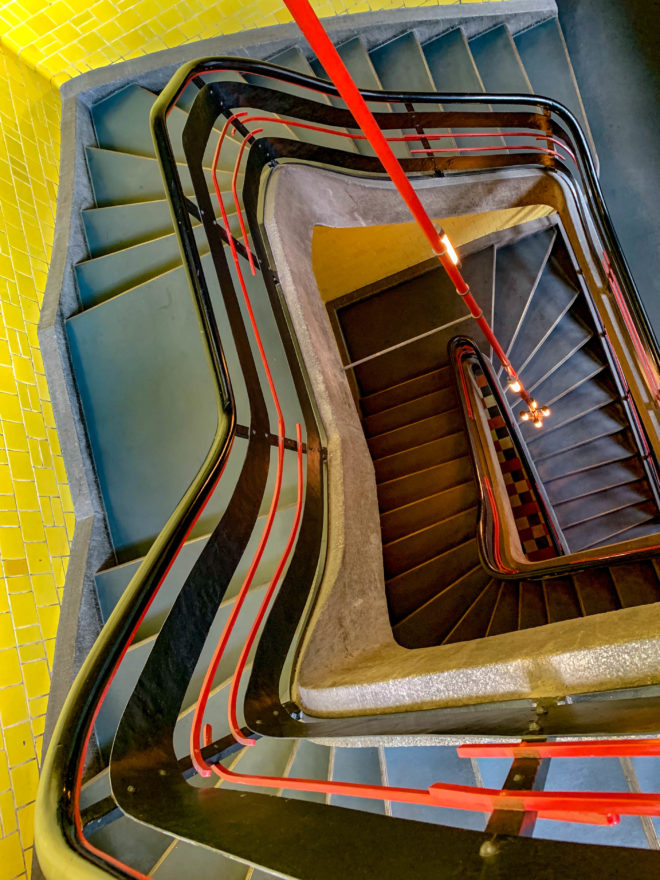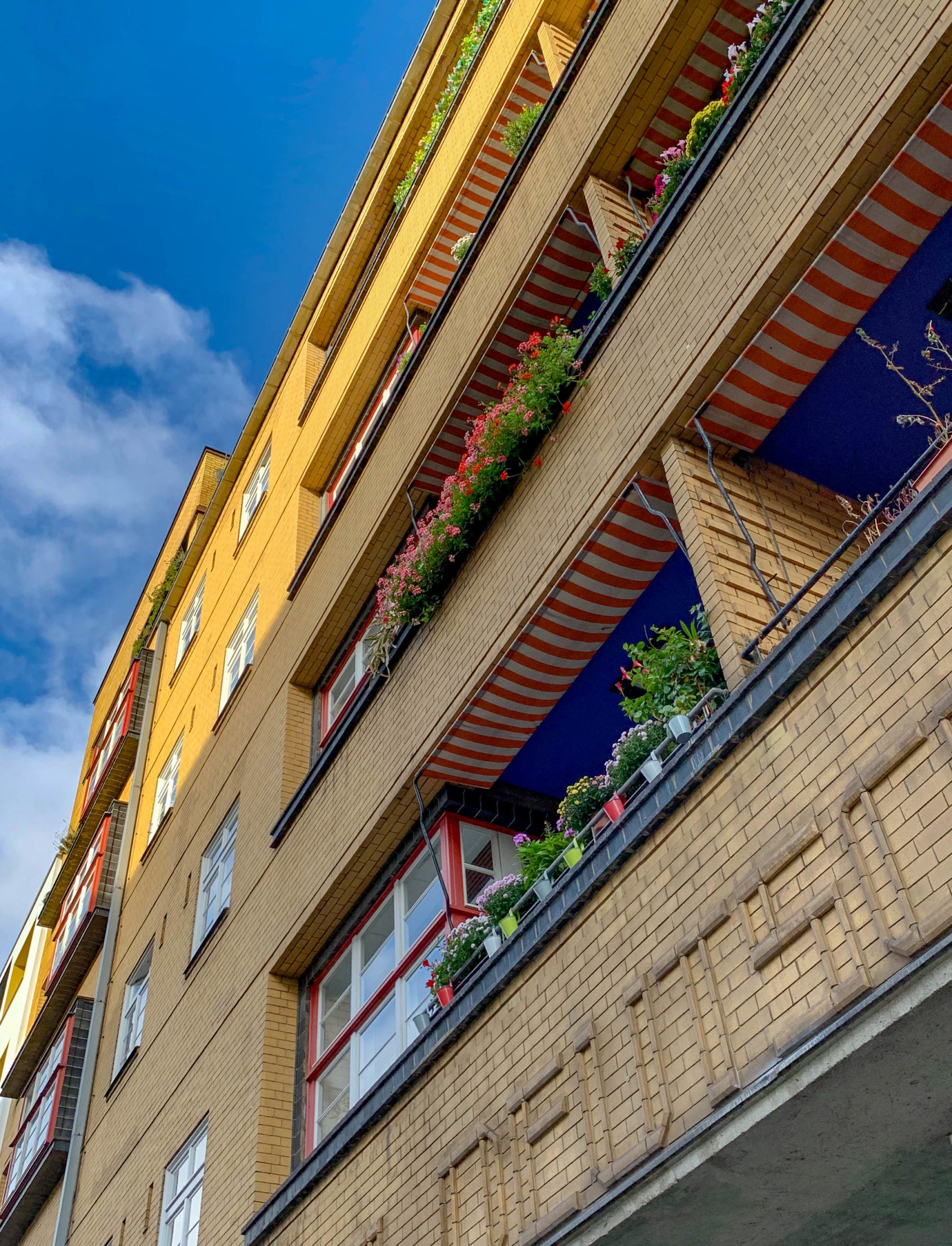
House for the Association of German Bookprinters, 1924-1926. Architects: Max Taut, Franz Hoffmann, Karl Bernhard. Photo: Daniela Christmann
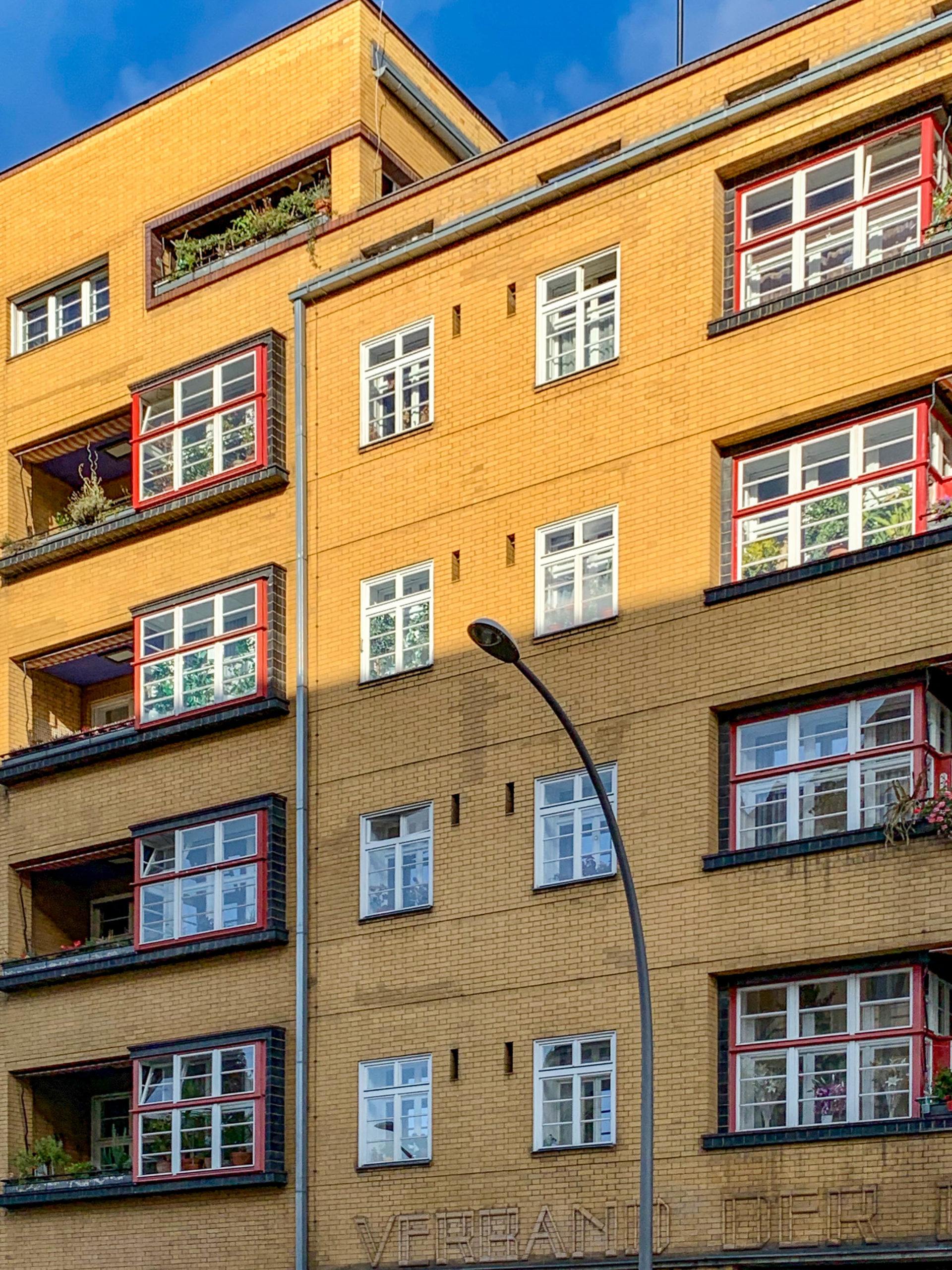
House for the Association of German Bookprinters, 1924-1926. Architects: Max Taut, Franz Hoffmann, Karl Bernhard. Photo: Daniela Christmann
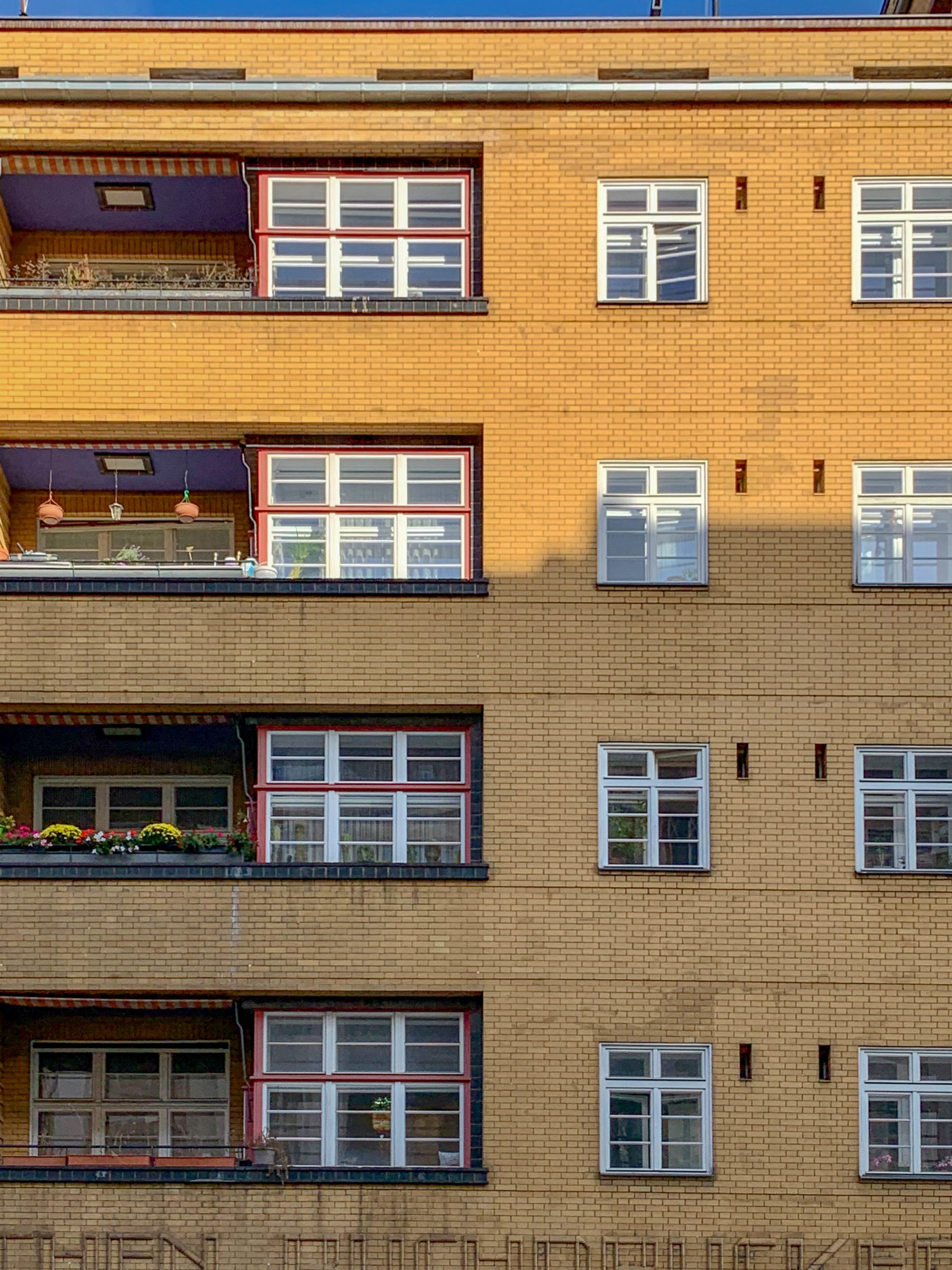
House for the Association of German Bookprinters, 1924-1926. Architects: Max Taut, Franz Hoffmann, Karl Bernhard. Photo: Daniela Christmann
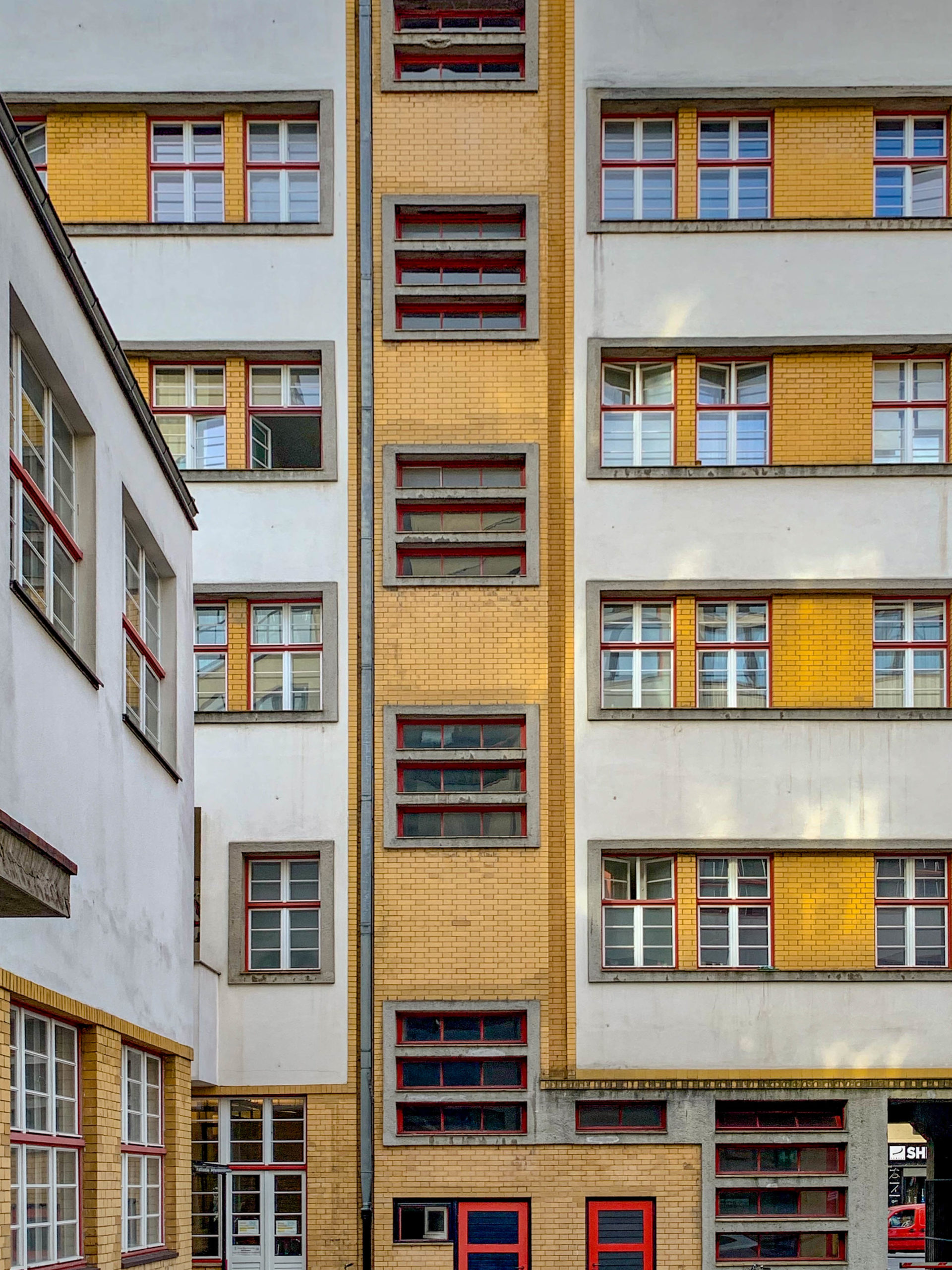
House for the Association of German Bookprinters, 1924-1926. Architects: Max Taut, Franz Hoffmann, Karl Bernhard. Photo: Daniela Christmann
1924 – 1926
Architects: Max Taut, Franz Hoffmann, Karl Bernhard
Dudenstraße 10, Berlin, Germany
The Verbandhaus der Deutschen Buchdrucker was built between 1924 and 1926 to designs by Max Taut, Franz Hoffmann and Karl Bernhard in the New Objectivity style.
In addition to apartments and stores, the front building originally housed the offices of the Verband Deutscher Buchdrucker (Association of German Book Printers), while the rear building housed a print shop and various conference rooms.
Background
In June 1920, at the General Assembly of the Association of German Book Printers, a proposal was passed instructing the board to build an association house.
The planned association house was to contain rooms for the association board, the editorial offices, various association departments, the office of the Graphischer Bund and the planned graphical industry association.
In May 1924, the purchase contract for a plot of land at what was then Dreibundstr. 5 was signed. For initial financing, a special contribution of one mark was levied on all members for two months.
In the summer of the same year, the architects Max Taut and Franz Hoffmann were commissioned to draw up designs for the new association building. Both had already gained experience with the building for the General German Trade Union Federation in Wallstraße in Berlin.
The designs and a model of the building were presented at the federation’s congress in September 1924 and accepted despite heated debates, particularly over financing.
Building
The combination of a residential building on the street side and an administration and printing building on the courtyard side makes the union building a typical example of Berlin commercial courtyard architecture.
The residential wing with a total of eighteen apartments for the union members stands out from the adjacent perimeter block development with its yellow exposed brickwork.
The different window shapes are striking, some of which are punched windows, others flush with the facade or box-shaped in the area of the loggias.
The printing plant building on the courtyard side was built as a frame structure in reinforced concrete. The skeleton construction allowed a variable division of the floors and an installation of the heavy printing presses.
Taut and Hoffmann used the supporting structure as the primary design element.
They let the mighty frame trusses step in front of the facade and covered both the concrete frames and the brick-lined parapet fields with a unifying gray plaster.
The print shop building is accessed by two staircases, whose features have been retained with the glass elevator and the colored tiles.
Gutenberg Book Guild
The Gutenberg Book Guild, which belonged to the Book Printers’ Association, began pioneering book production in the building.
Young graphic artists and experienced designers developed a new book art and set standards with designs in the spirit of New Objectivity.
The printing workshops employed around 100 people. They had an exemplary training workshop and were considered a model company in terms of premises and social facilities.
The publications Typographische Mitteilungen and Der Graphische Betrieb appeared monthly.
With readings, slide shows, films and the establishment of a photographic station, the association made a significant contribution to apprentice training and adult education.
Postwar
Since the end of the Second World War, the building has once again been the headquarters of the union.
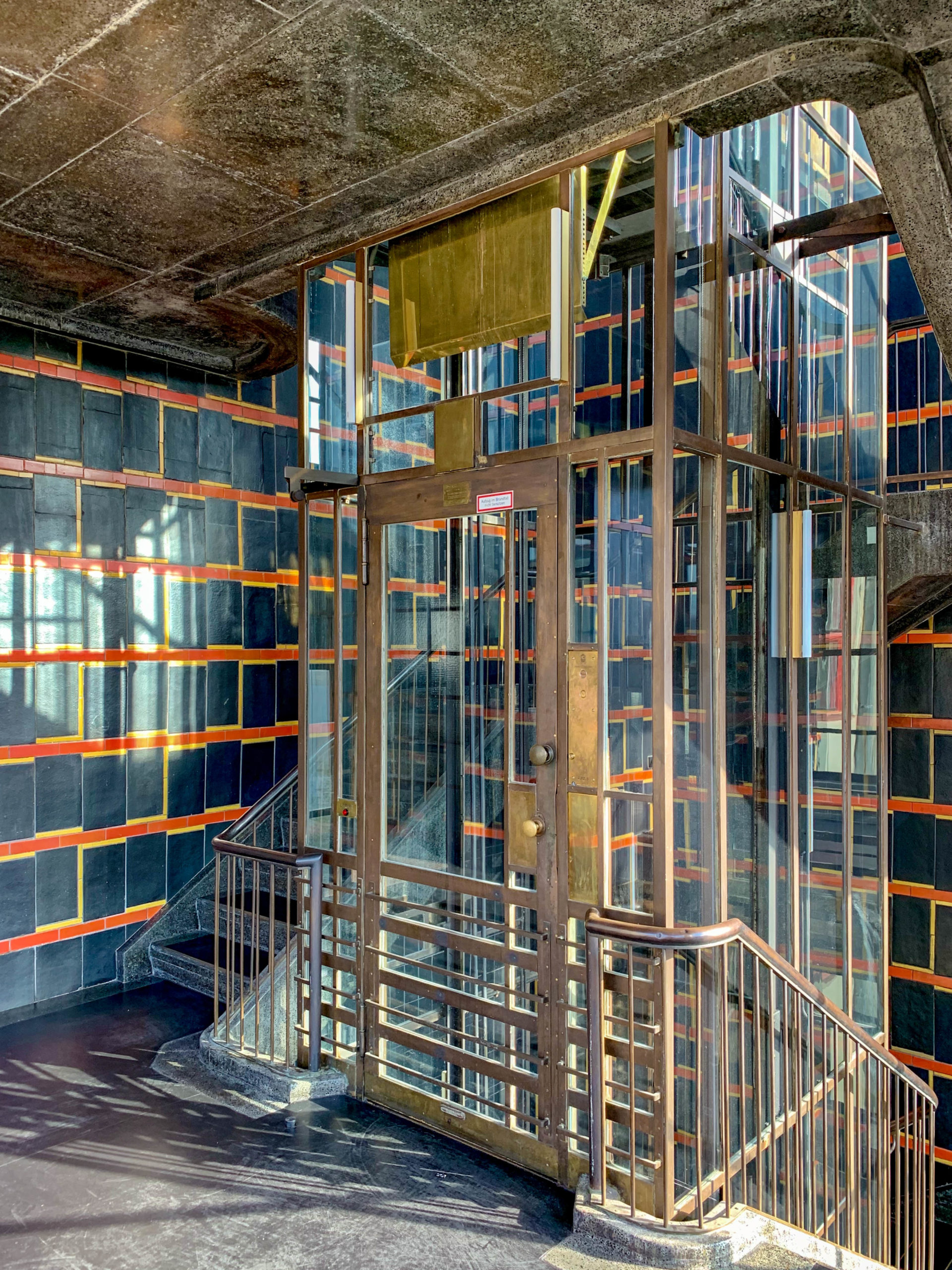
House for the Association of German Bookprinters, 1924-1926. Architects: Max Taut, Franz Hoffmann, Karl Bernhard. Photo: Daniela Christmann
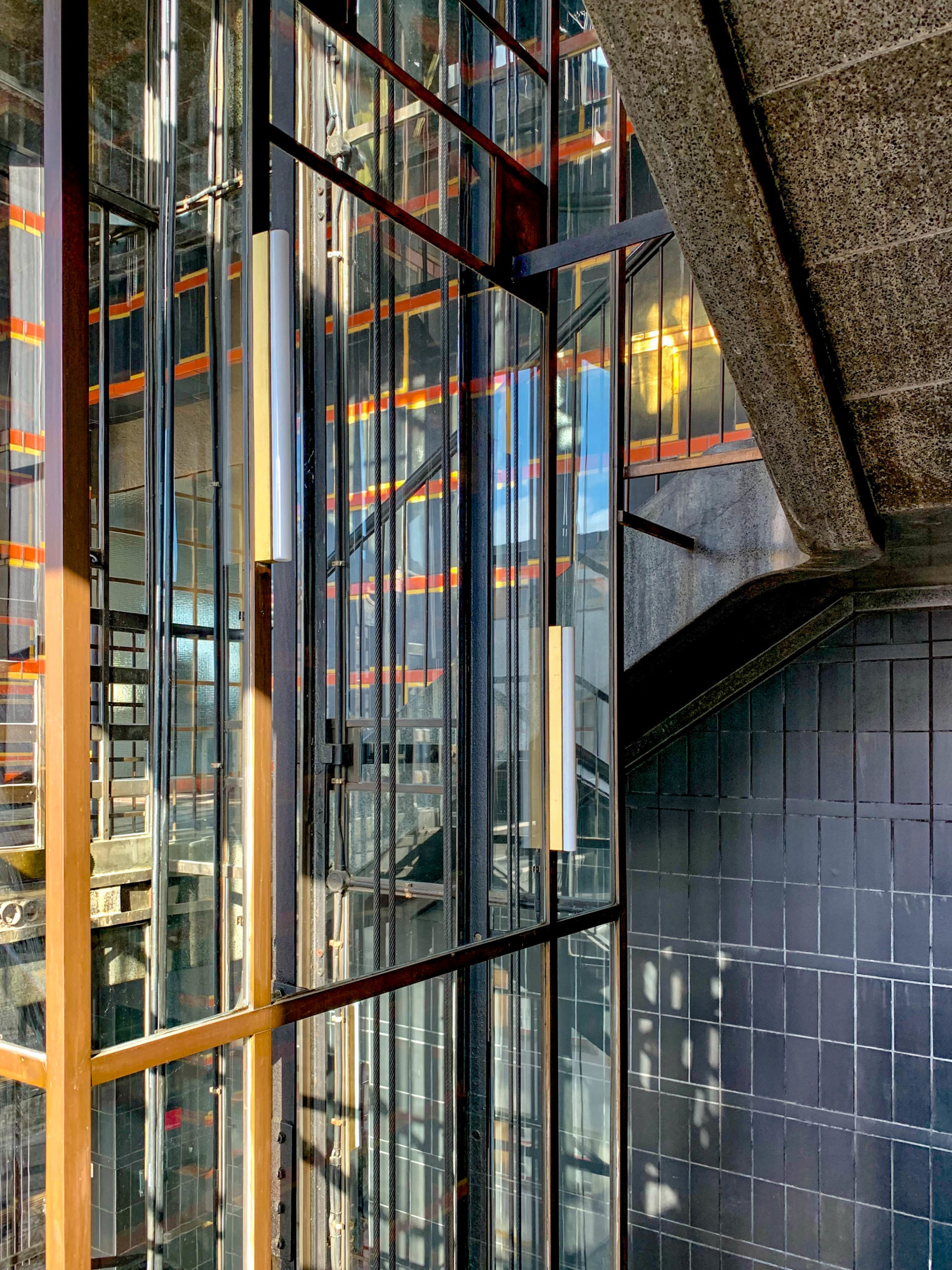
House for the Association of German Bookprinters, 1924-1926. Architects: Max Taut, Franz Hoffmann, Karl Bernhard. Photo: Daniela Christmann
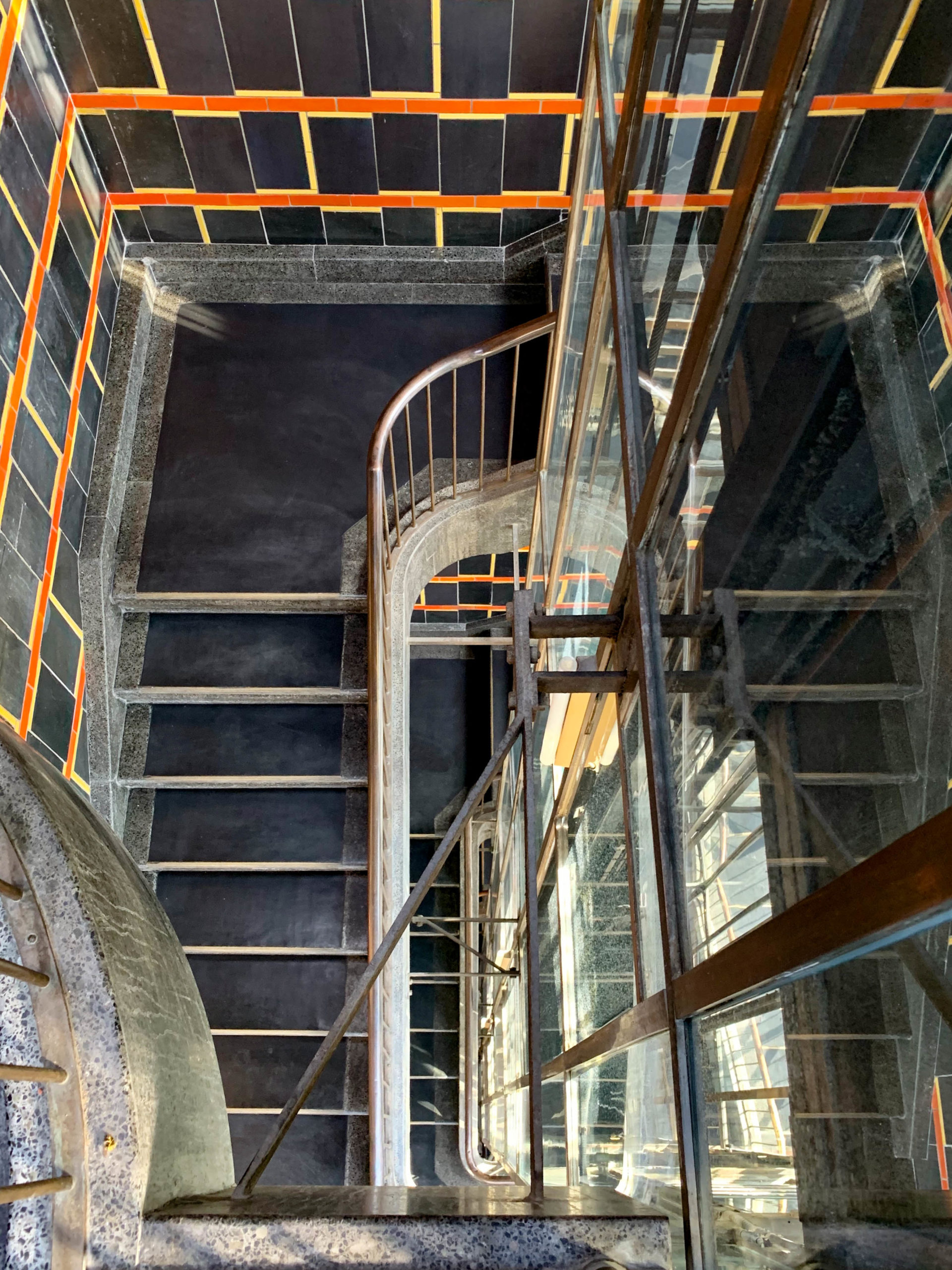
House for the Association of German Bookprinters, 1924-1926. Architects: Max Taut, Franz Hoffmann, Karl Bernhard. Photo: Daniela Christmann
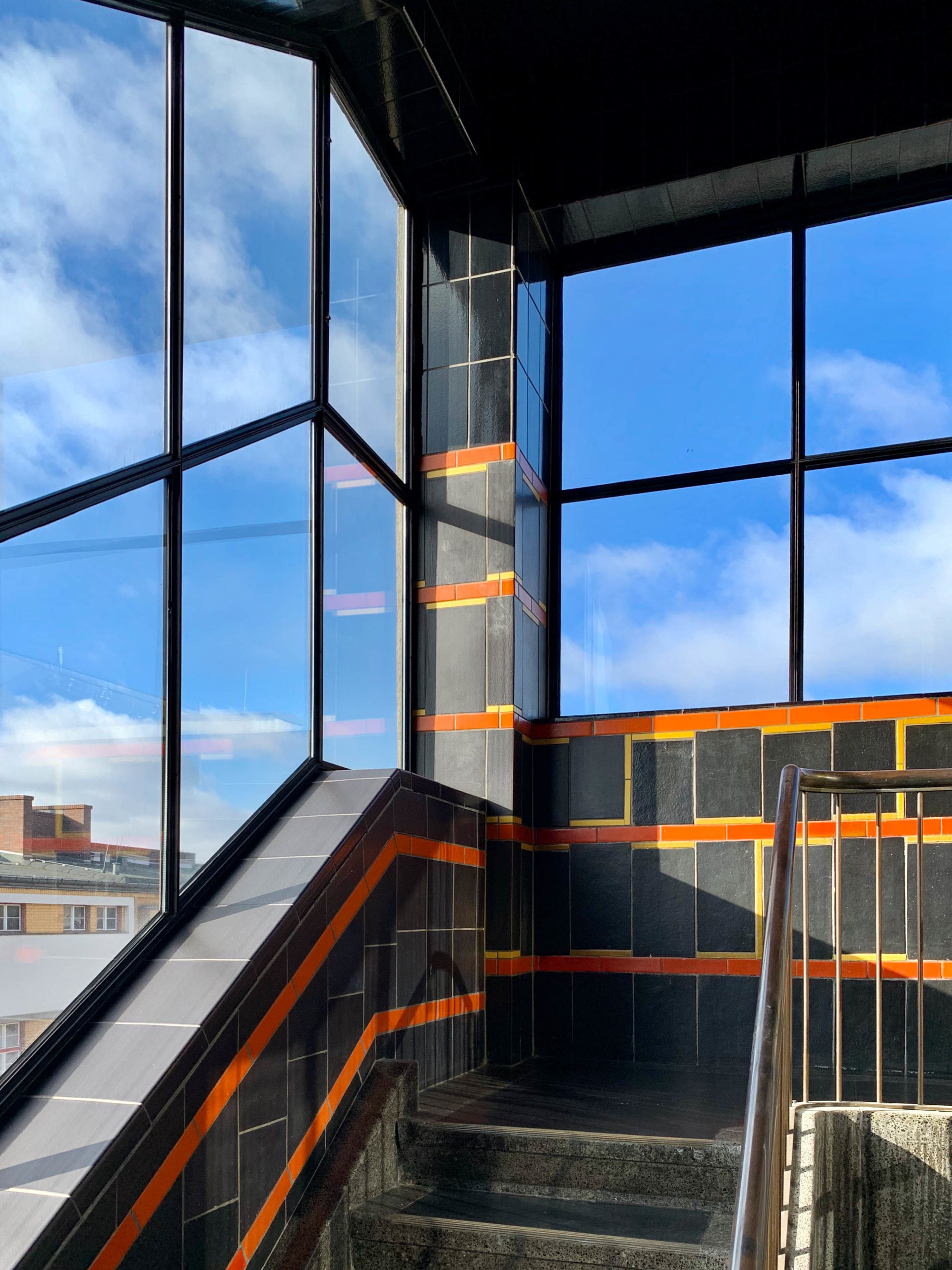
House for the Association of German Bookprinters, 1924-1926. Architects: Max Taut, Franz Hoffmann, Karl Bernhard. Photo: Daniela Christmann
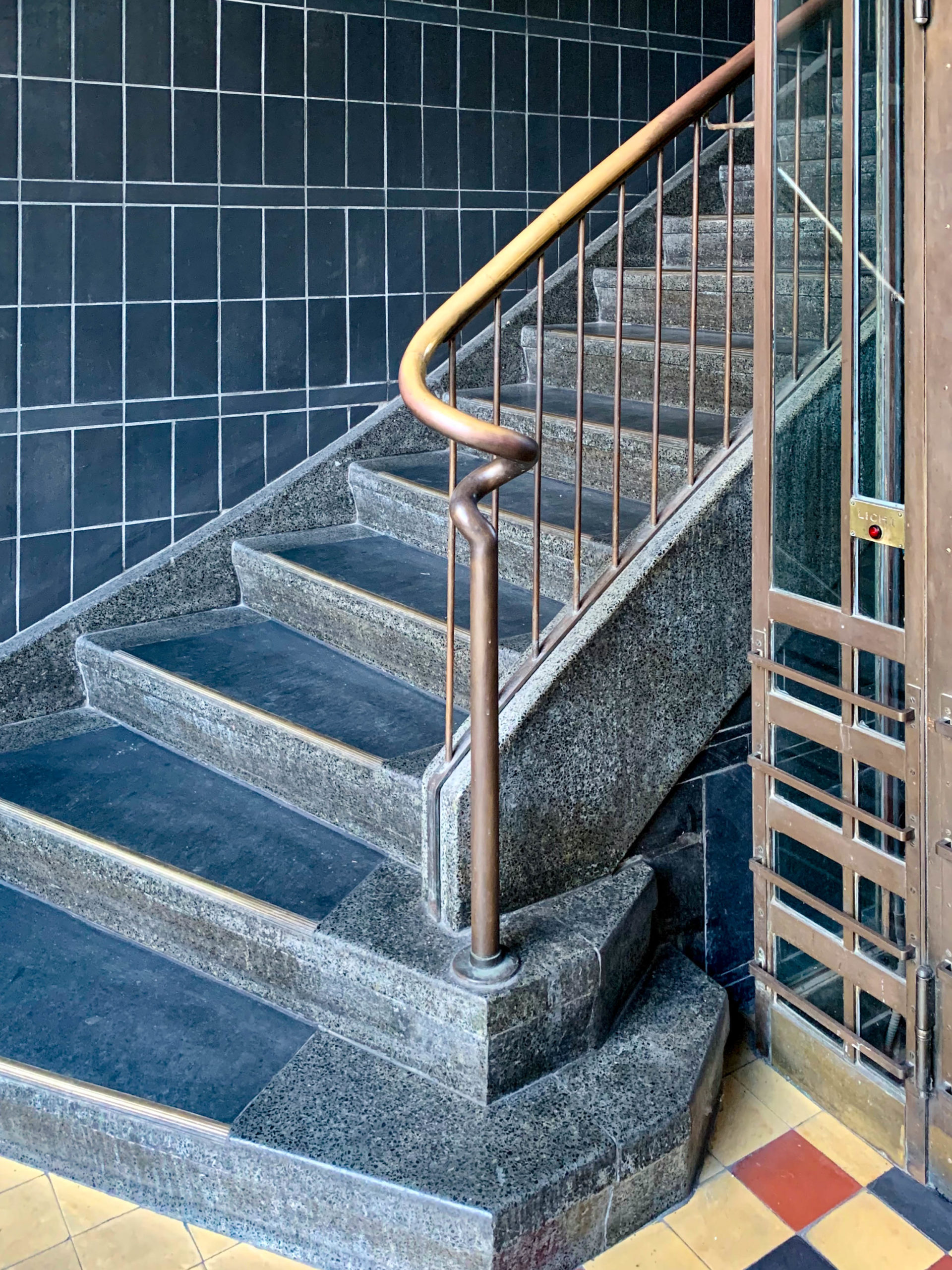
House for the Association of German Bookprinters, 1924-1926. Architects: Max Taut, Franz Hoffmann, Karl Bernhard. Photo: Daniela Christmann
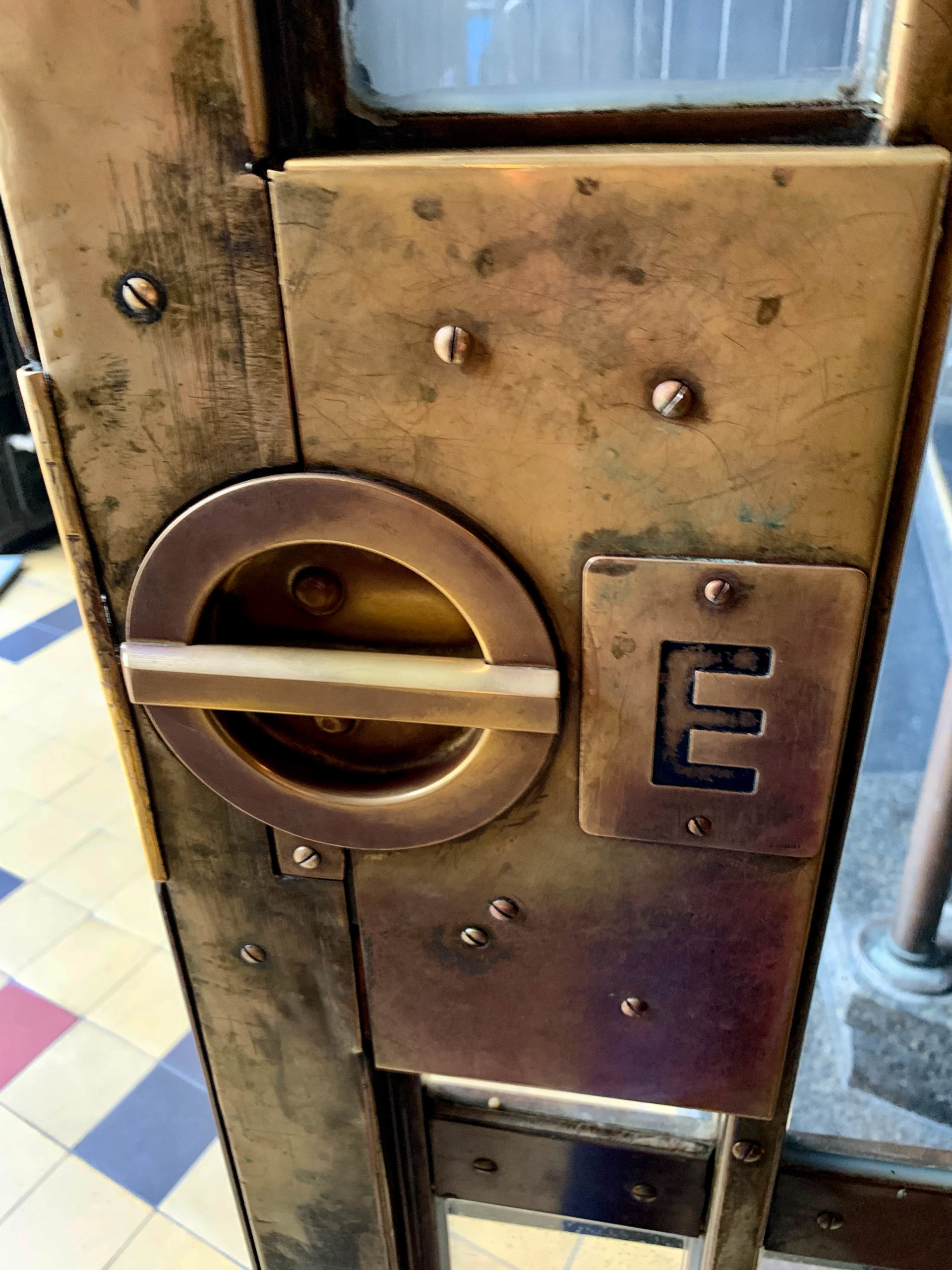
House for the Association of German Bookprinters, 1924-1926. Architects: Max Taut, Franz Hoffmann, Karl Bernhard. Photo: Daniela Christmann
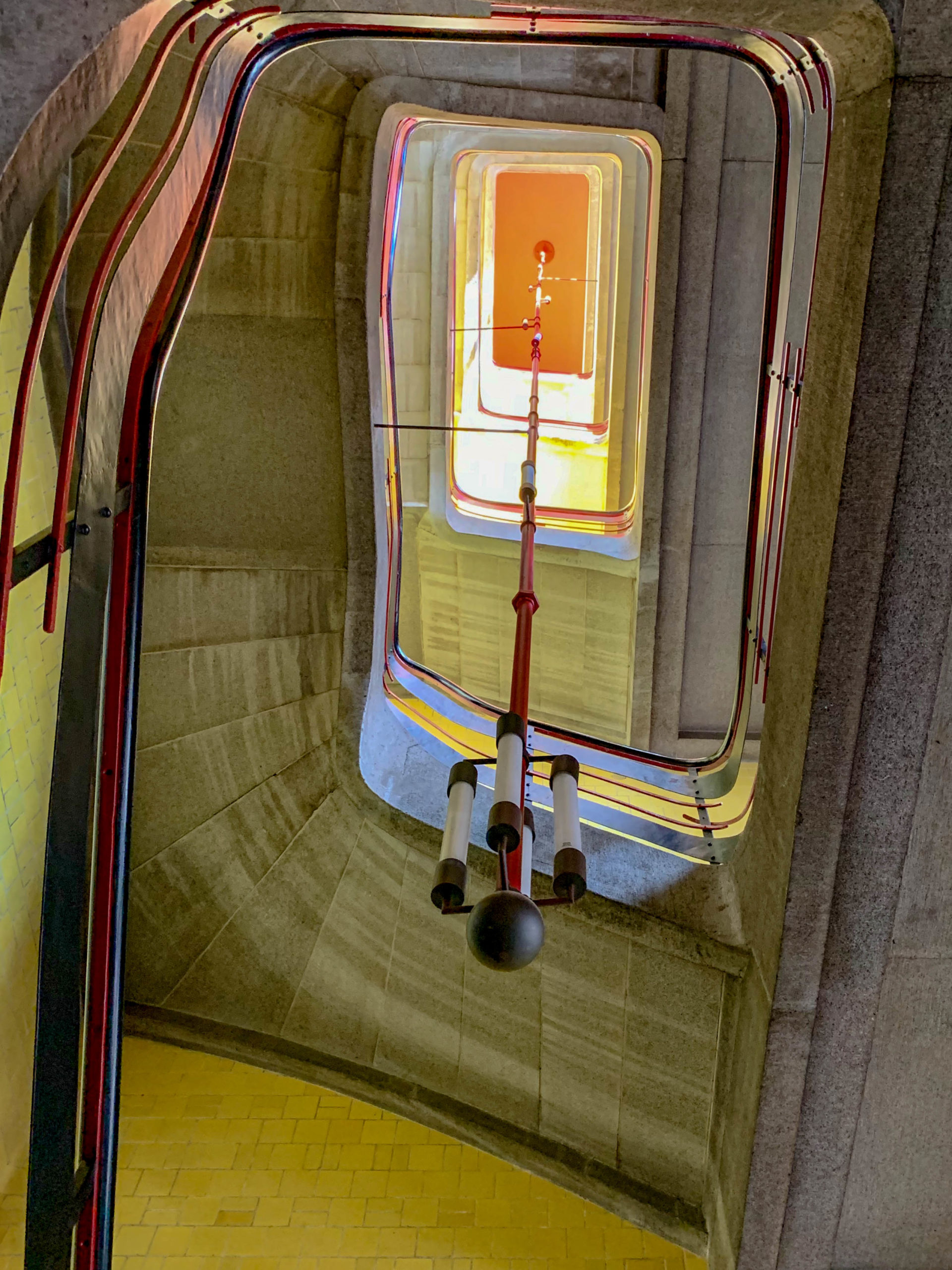
House for the Association of German Bookprinters, 1924-1926. Architects: Max Taut, Franz Hoffmann, Karl Bernhard. Photo: Daniela Christmann
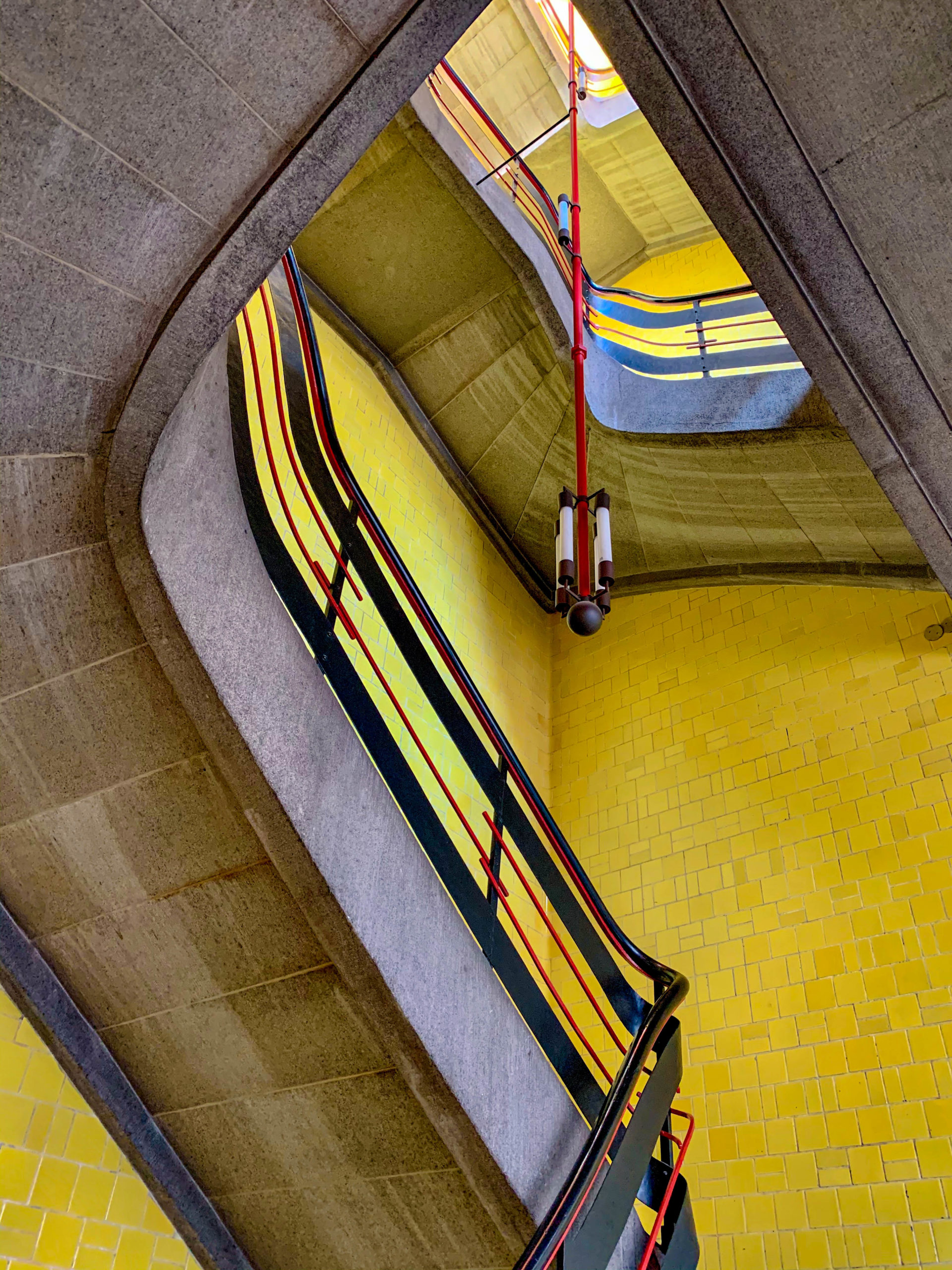
House for the Association of German Bookprinters, 1924-1926. Architects: Max Taut, Franz Hoffmann, Karl Bernhard. Photo: Daniela Christmann
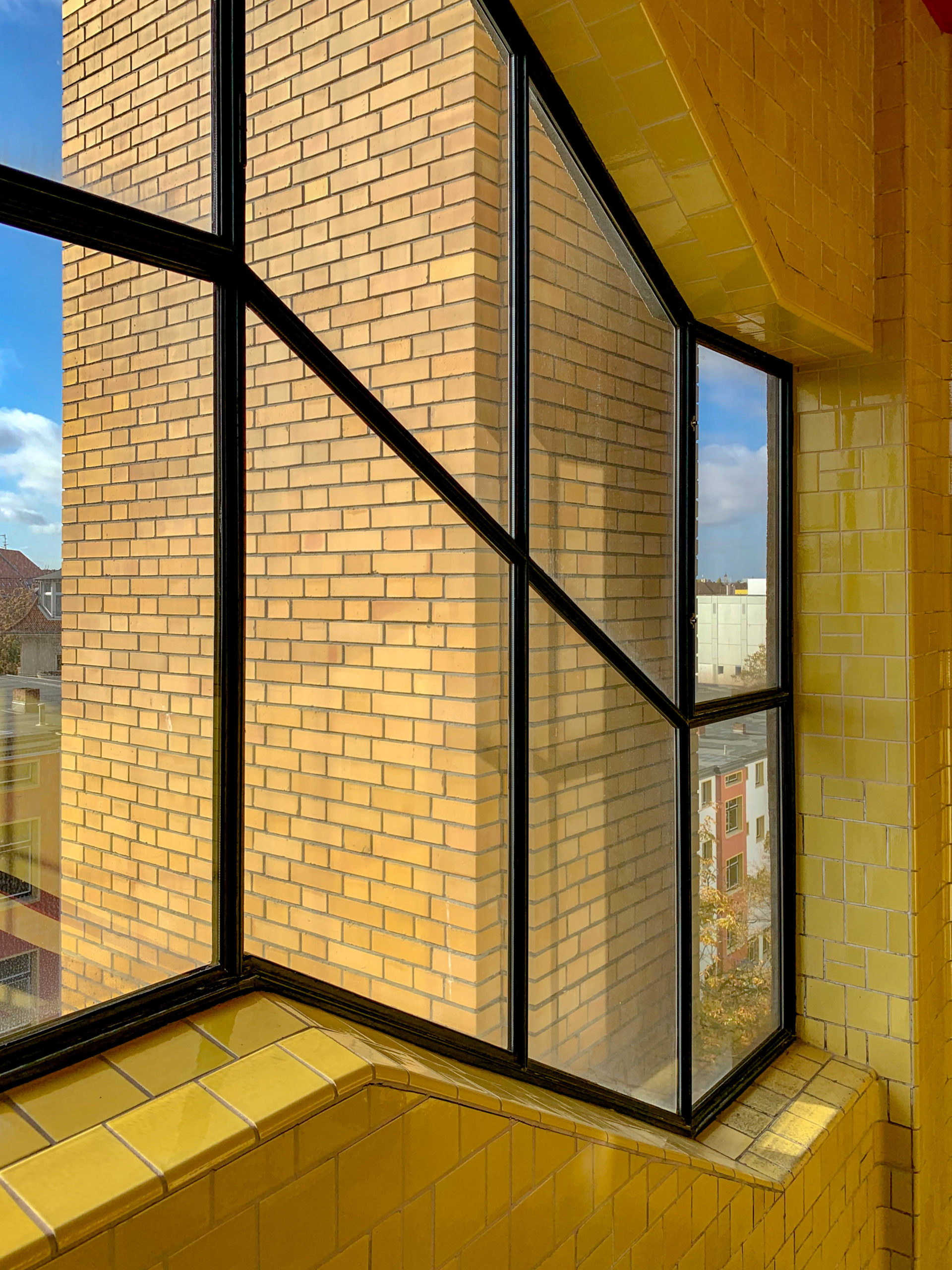
House for the Association of German Bookprinters, 1924-1926. Architects: Max Taut, Franz Hoffmann, Karl Bernhard. Photo: Daniela Christmann
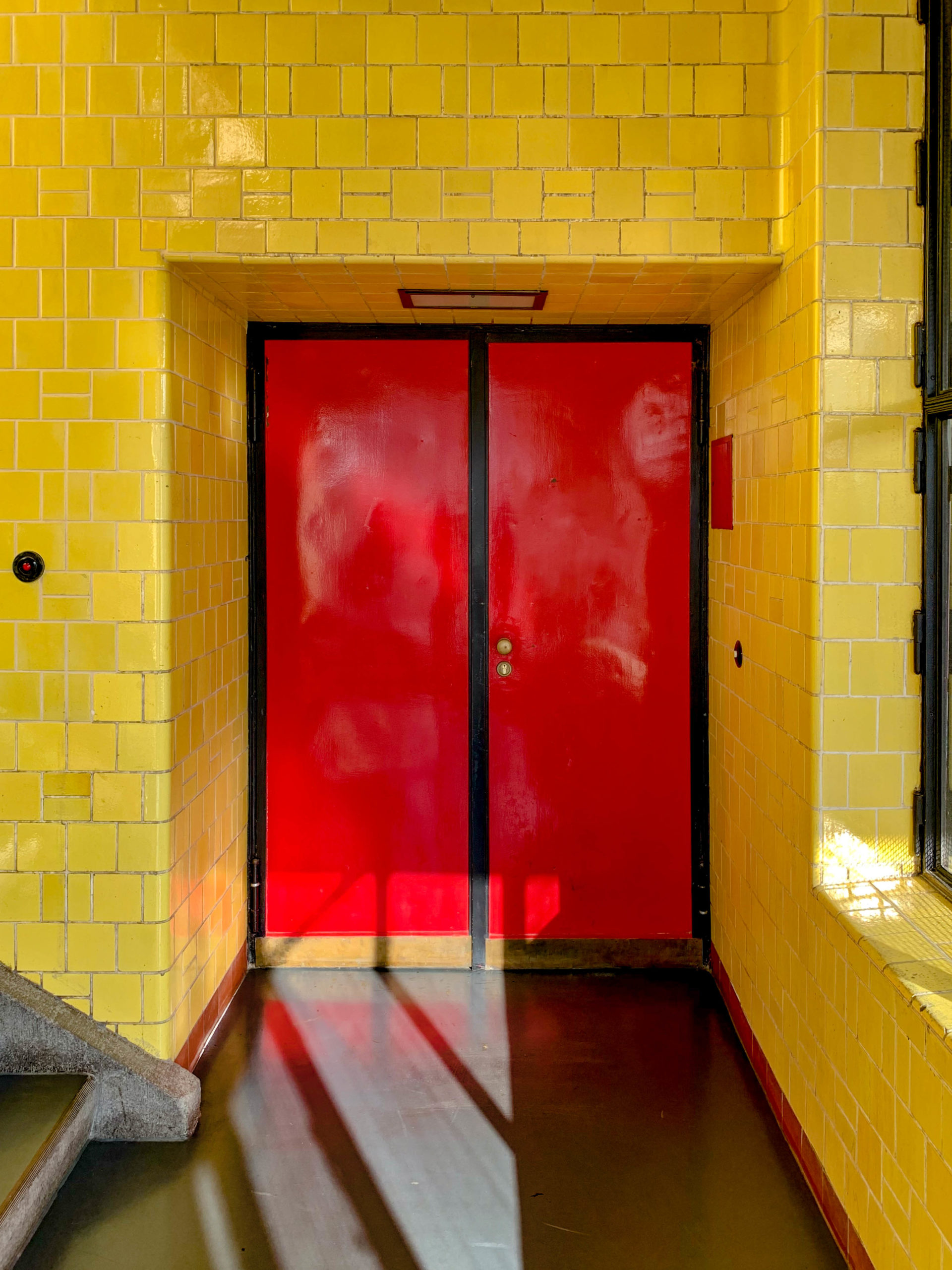
House for the Association of German Bookprinters, 1924-1926. Architects: Max Taut, Franz Hoffmann, Karl Bernhard. Photo: Daniela Christmann
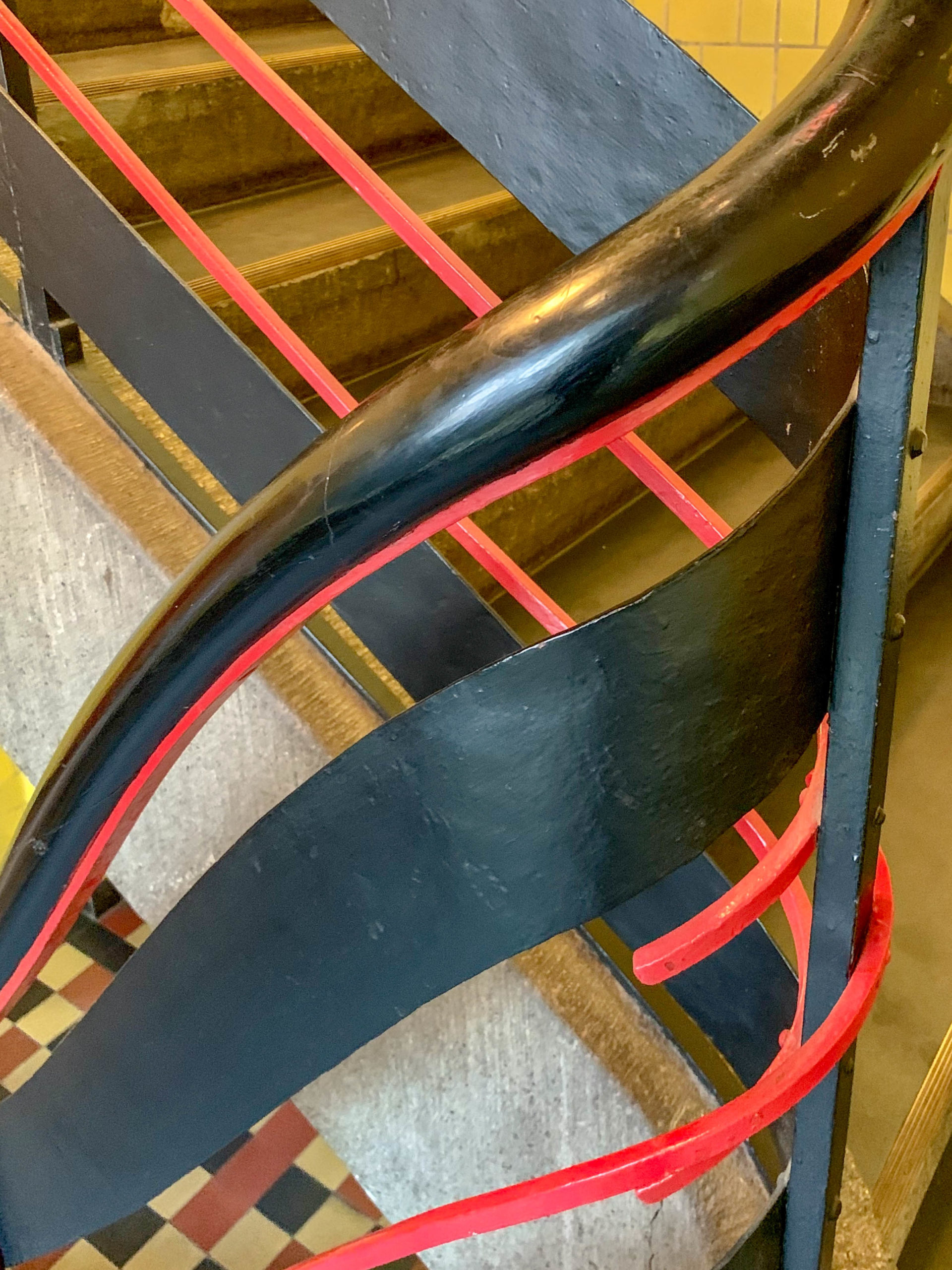
House for the Association of German Bookprinters, 1924-1926. Architects: Max Taut, Franz Hoffmann, Karl Bernhard. Photo: Daniela Christmann

